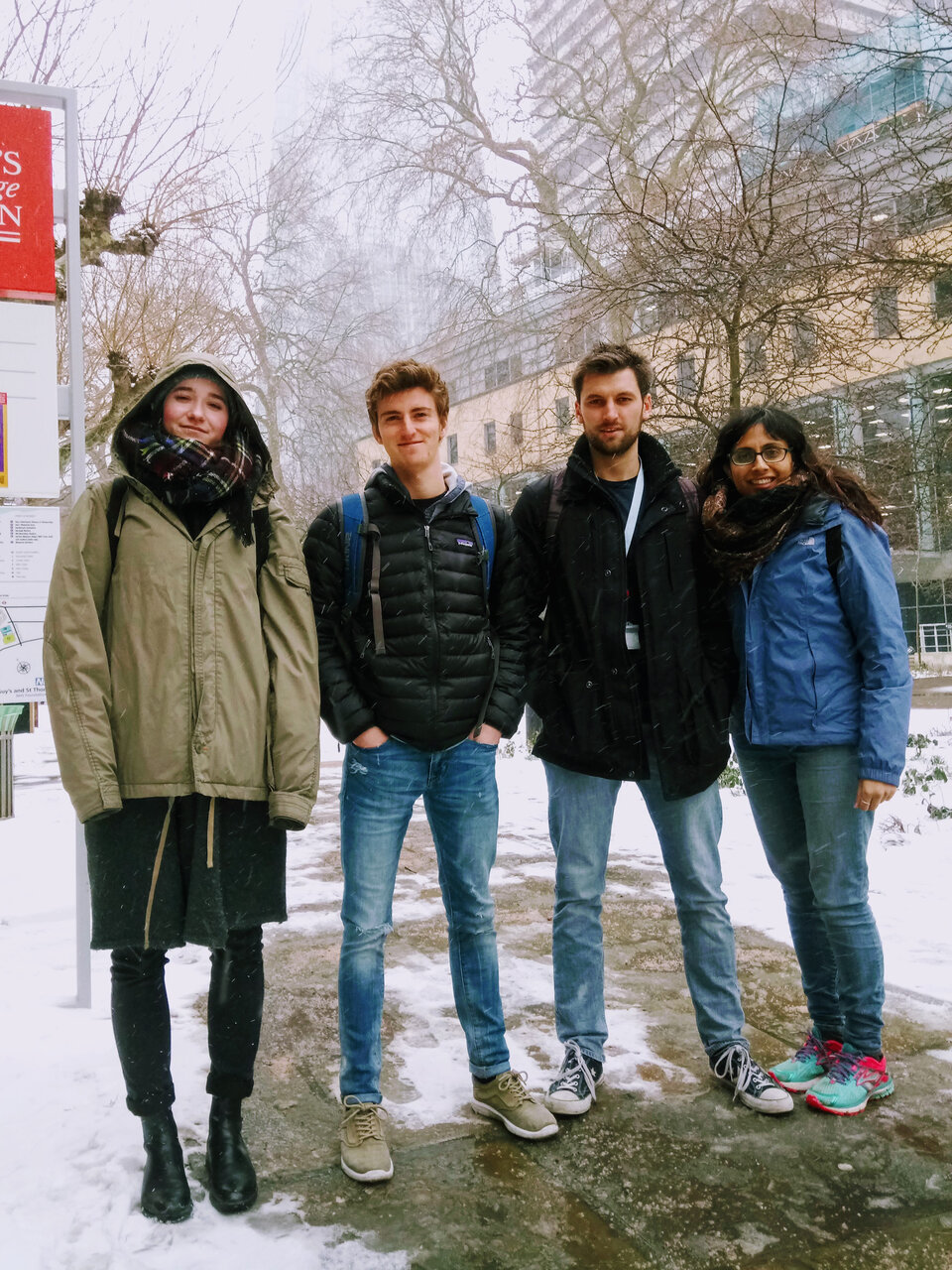Meet the teams: SpinKings
The spine and its associated structures undergo several adaptations in response to both long and short-term space flight. These changes include intervertebral disc swelling, stature change and a reduction in the bone density of the spine. Consequently, there is an increased likelihood of serious injury, such as intervertebral disc herniation, when astronauts return to earth.
The effect of a combined g and activity countermeasure design on anterior intervertebral disc height measured using ultrasound
| University | King’s College London |
| Endorsing professor |
Prof. Thais Russomano King’s College London |
| Team | Luke Edinborough, Biswajit Deb, Nadia Abid, Mitchell Segal |

To counter this, people in space undergo strict exercise regimes to load their spines in an effort to prevent this deconditioning. Despite this, astronauts are still experiencing substantial issues. Researchers are beginning to investigate to the possibility of brining gravity with us when we go to space. This can be achieved by spinning part of the space station, like a centrifuge. This could provide the stimulus needed to maintain the health of the spine during long term space missions. Students understand that by loading the spine on earth, whether it be through exercise or backpack loading, they can compress the size of the intervertebral discs, a factor associated with the stature change and increased risk of herniation. The aim of their project is to apply an acceleration vector down the length of the spine by spinning participants in the short arm centrifuge at DLR.
Using Ultrasound, students can measure disc height before and after a spin to see if this modality has any effect on the intervertebral discs. The data from this study will help to inform on the use of artificial gravity as a counter measure in space. On earth, the data might also be useful in treatment of intervertebral disc degradation and in showing how the spine reacts to high G, like in high-speed manoeuvres in jet aircraft.

